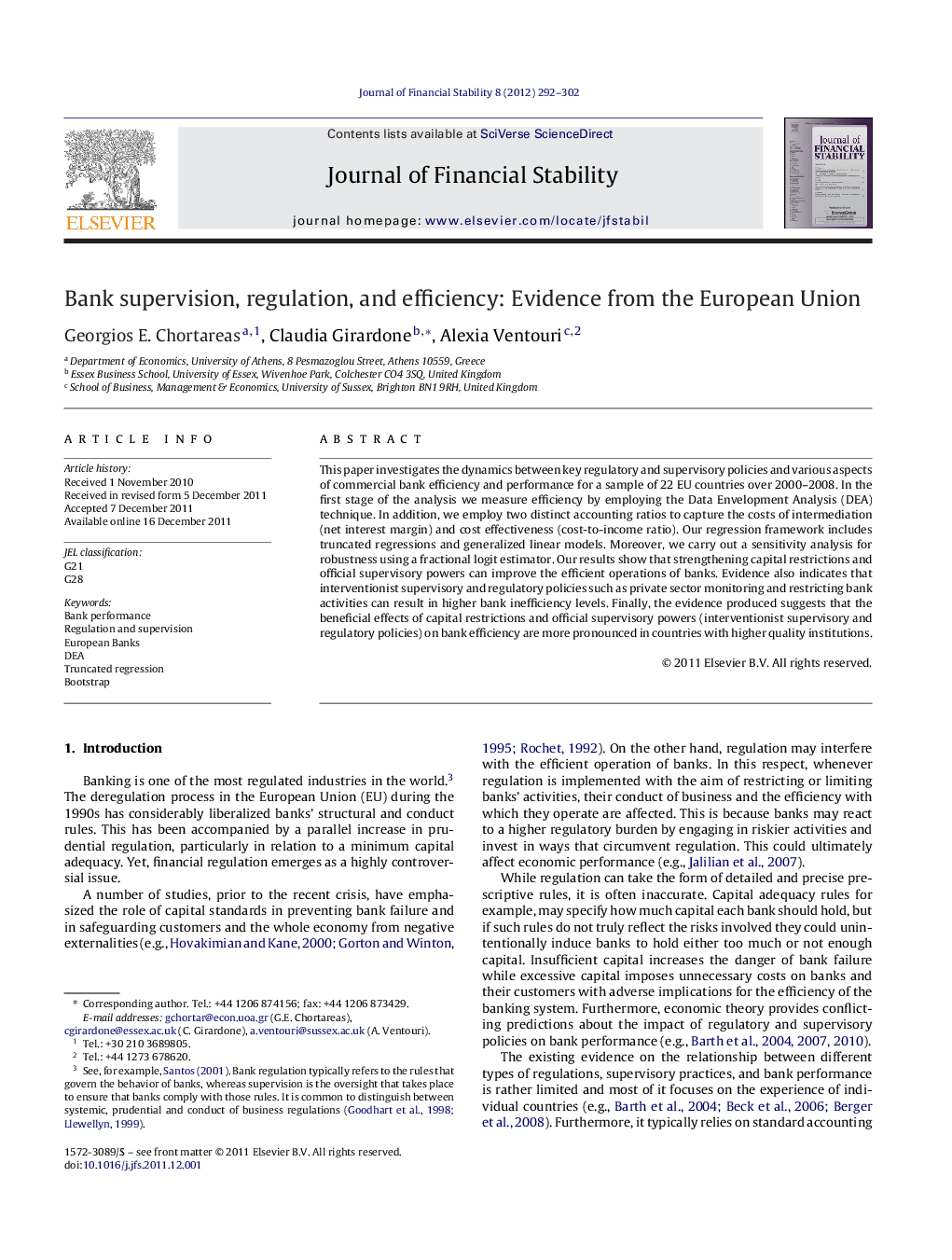| Article ID | Journal | Published Year | Pages | File Type |
|---|---|---|---|---|
| 999040 | Journal of Financial Stability | 2012 | 11 Pages |
This paper investigates the dynamics between key regulatory and supervisory policies and various aspects of commercial bank efficiency and performance for a sample of 22 EU countries over 2000–2008. In the first stage of the analysis we measure efficiency by employing the Data Envelopment Analysis (DEA) technique. In addition, we employ two distinct accounting ratios to capture the costs of intermediation (net interest margin) and cost effectiveness (cost-to-income ratio). Our regression framework includes truncated regressions and generalized linear models. Moreover, we carry out a sensitivity analysis for robustness using a fractional logit estimator. Our results show that strengthening capital restrictions and official supervisory powers can improve the efficient operations of banks. Evidence also indicates that interventionist supervisory and regulatory policies such as private sector monitoring and restricting bank activities can result in higher bank inefficiency levels. Finally, the evidence produced suggests that the beneficial effects of capital restrictions and official supervisory powers (interventionist supervisory and regulatory policies) on bank efficiency are more pronounced in countries with higher quality institutions.
► We investigate the dynamics between regulatory policies and EU banks’ performance. ► We test DEA efficiency scores, costs of intermediation and cost-to-income ratios. ► Strengthening capital restrictions and supervisory powers improve bank efficiency. ► Private monitoring and restrictions on bank activities can impair efficiency. ► Countries with higher quality institutions benefit more from capital restrictions.
